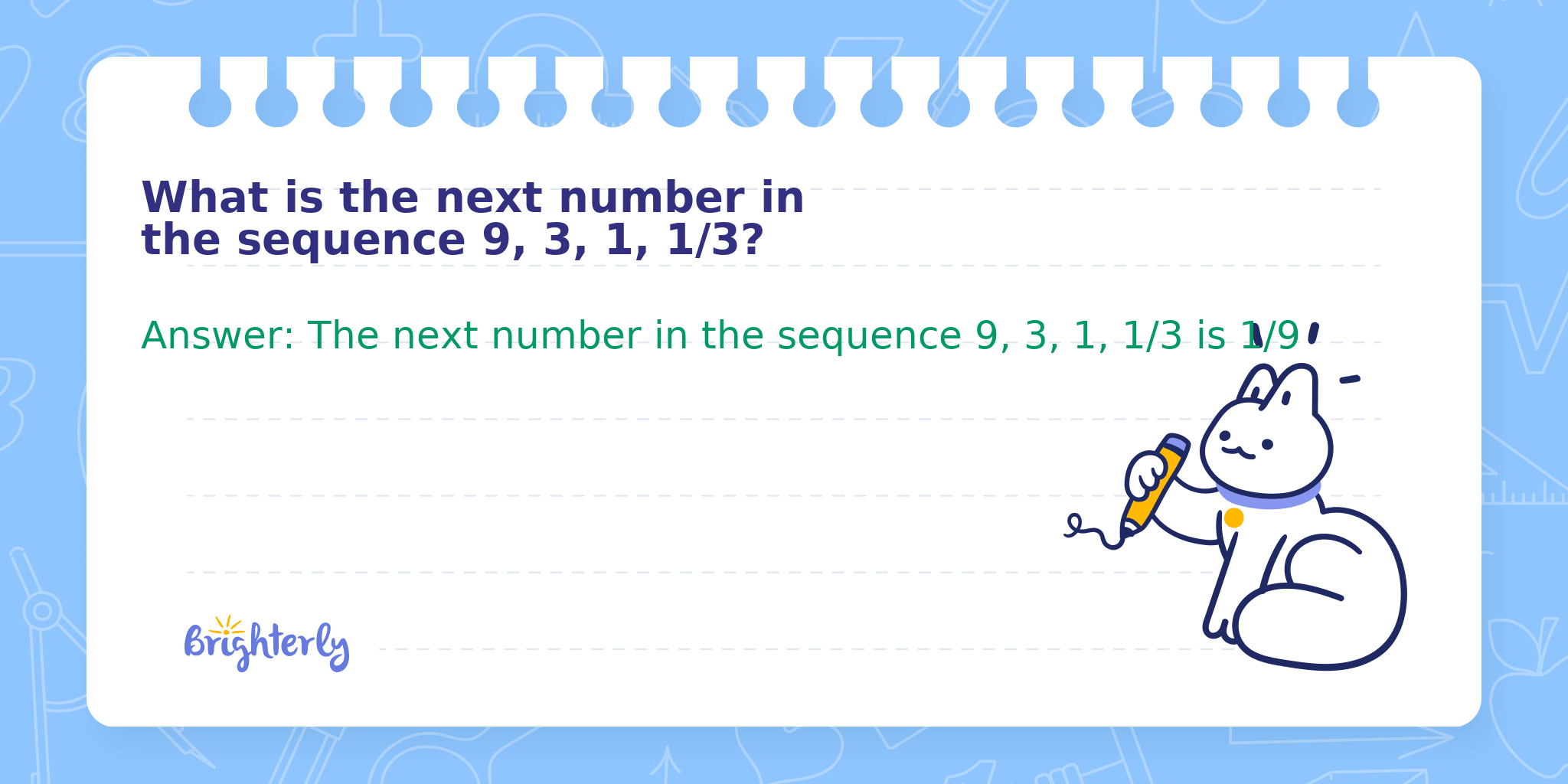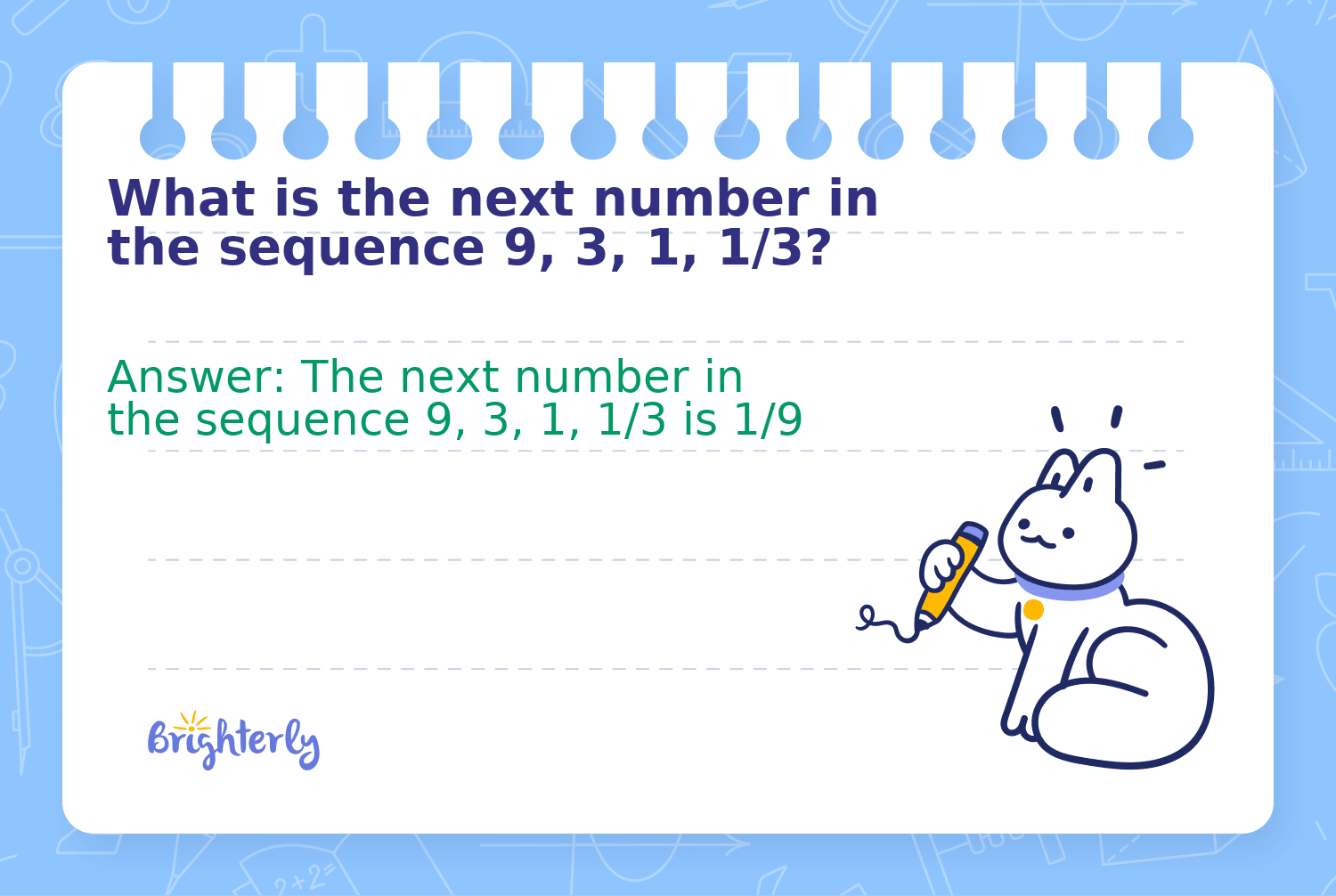
Reviewed by Jo-ann Caballes
What is the next number in the sequence 9, 3, 1, 1/3?
Answer: The next number in the sequence 9, 3, 1, 1/3 is 1/9
This sequence is an example of a geometric progression, where each term is multiplied by a constant to produce the next term. Understanding the pattern that governs such sequences helps in figuring out what comes next.
Methods
Math Tutor Explanation Using the Geometric Sequence Method
A geometric sequence is a pattern of numbers where each term after the first is found by multiplying the previous term by a specific value called the common ratio.
Step 1: Step 1: Identify the common ratio by dividing any term by the previous term (for example, 3 divided by 9 is 1/3)
Step 2: Step 2: Multiply the last term of the sequence by the common ratio (1/3 × 1/3)
Math Tutor Explanation Using the Pattern Recognition Method
Observing the sequence, you can recognize a consistent relationship between each pair of consecutive terms.
Step 1: Step 1: Check the ratios between terms: 9/3 = 3, 3/1 = 3, 1/(1/3) = 3
Step 2: Step 2: Confirm the pattern is dividing each term by 3 or multiplying by 1/3
Step 1:
Step 2:
Math Tutor suggests: Practice More Number Patterns and Sequences
Explore more questions involving patterns and next numbers in sequences to sharpen your problem-solving skills.
FAQ on Number Sequences
What is a geometric sequence?
A geometric sequence is a list of numbers where each term is found by multiplying the previous term by a fixed, non-zero number called the common ratio.
How do you find the common ratio in a geometric sequence?
Divide any term in the sequence by the term that comes before it.
What is the formula for the nth term of a geometric sequence?
The nth term is given by a * r^(n-1), where a is the first term and r is the common ratio.
Can geometric sequences include fractions or decimals?
Yes, geometric sequences can have any kind of number, including fractions and decimals.


